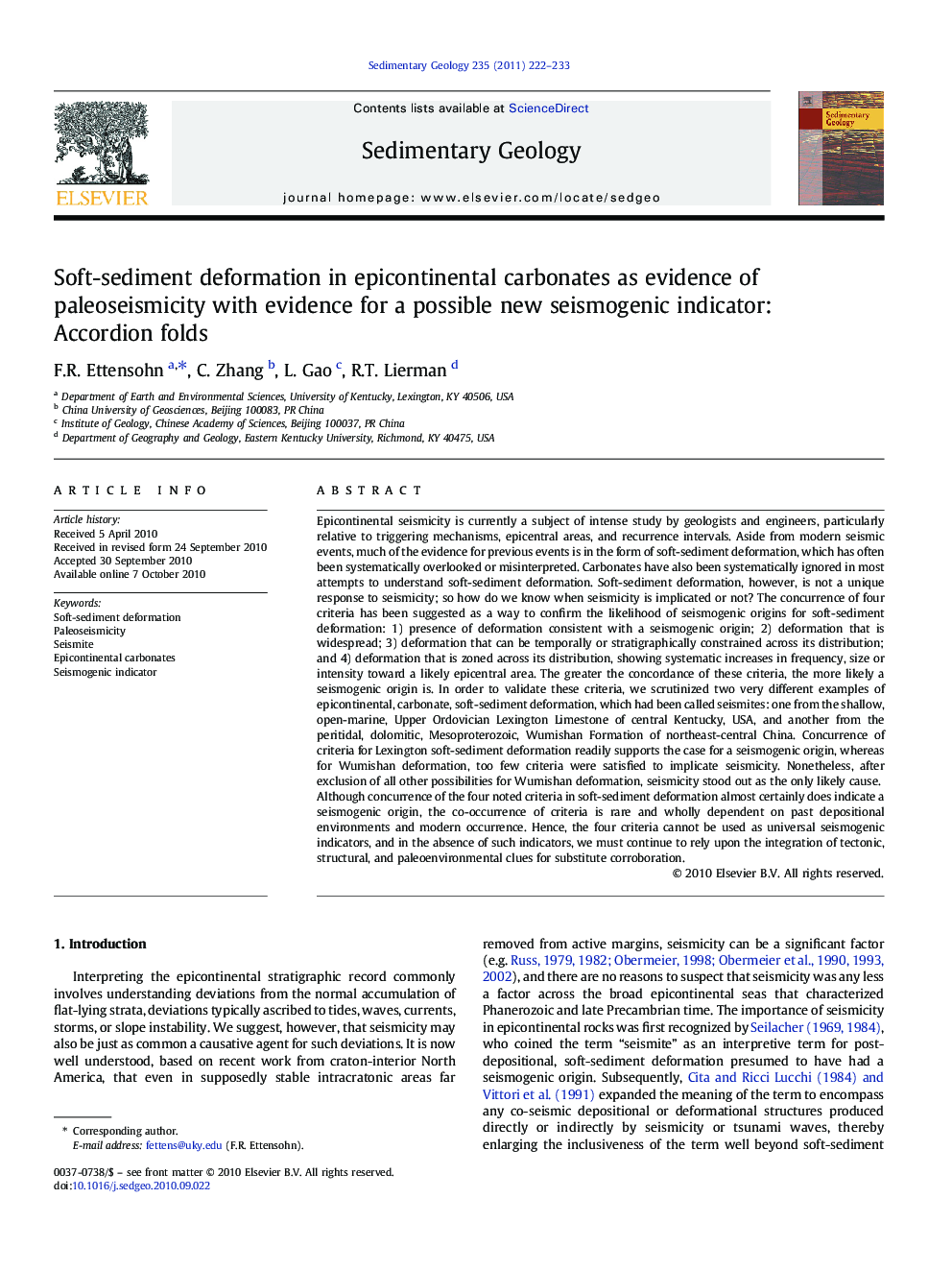| کد مقاله | کد نشریه | سال انتشار | مقاله انگلیسی | نسخه تمام متن |
|---|---|---|---|---|
| 4690243 | 1636112 | 2011 | 12 صفحه PDF | دانلود رایگان |

Epicontinental seismicity is currently a subject of intense study by geologists and engineers, particularly relative to triggering mechanisms, epicentral areas, and recurrence intervals. Aside from modern seismic events, much of the evidence for previous events is in the form of soft-sediment deformation, which has often been systematically overlooked or misinterpreted. Carbonates have also been systematically ignored in most attempts to understand soft-sediment deformation. Soft-sediment deformation, however, is not a unique response to seismicity; so how do we know when seismicity is implicated or not? The concurrence of four criteria has been suggested as a way to confirm the likelihood of seismogenic origins for soft-sediment deformation: 1) presence of deformation consistent with a seismogenic origin; 2) deformation that is widespread; 3) deformation that can be temporally or stratigraphically constrained across its distribution; and 4) deformation that is zoned across its distribution, showing systematic increases in frequency, size or intensity toward a likely epicentral area. The greater the concordance of these criteria, the more likely a seismogenic origin is. In order to validate these criteria, we scrutinized two very different examples of epicontinental, carbonate, soft-sediment deformation, which had been called seismites: one from the shallow, open-marine, Upper Ordovician Lexington Limestone of central Kentucky, USA, and another from the peritidal, dolomitic, Mesoproterozoic, Wumishan Formation of northeast-central China. Concurrence of criteria for Lexington soft-sediment deformation readily supports the case for a seismogenic origin, whereas for Wumishan deformation, too few criteria were satisfied to implicate seismicity. Nonetheless, after exclusion of all other possibilities for Wumishan deformation, seismicity stood out as the only likely cause.Although concurrence of the four noted criteria in soft-sediment deformation almost certainly does indicate a seismogenic origin, the co-occurrence of criteria is rare and wholly dependent on past depositional environments and modern occurrence. Hence, the four criteria cannot be used as universal seismogenic indicators, and in the absence of such indicators, we must continue to rely upon the integration of tectonic, structural, and paleoenvironmental clues for substitute corroboration.
Journal: Sedimentary Geology - Volume 235, Issues 3–4, 1 April 2011, Pages 222–233